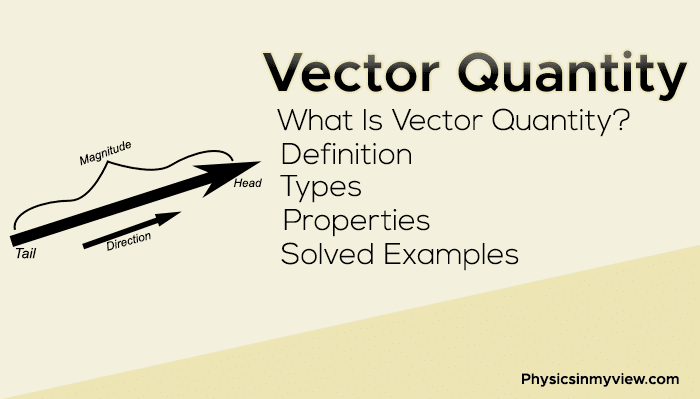There are things in this world that require not one but two things to be solved and understood. You may find many instances from a philosophical point of view and a scientific point of view, and we will explore the scientific one.
What is a Vector Quantity?
Let’s begin with an example for better comprehension. Displacement is considered a vector quantity. Why?
Displacement refers to the shortest measurement between the original position of an object to its current position. The route of the object from the initial to the current position is usually not linear.
A car, for instance, must have traveled up, down, left, right to reach the current position. Through distance you can know the measured value, but how will you find the direction in which the car is parked right now?
It is displacement, i.e., a Vector quantity that considers both magnitude and direction to give you the shortest distance between original and current points, in addition to the direction as north, south, west, east, or any of the combinations.
Editor’s Choice: Difference Between Scalar and Vector Quantity (All New)
Definition
Contradicting the Scalar quantity rules, Vector quantity is the opposite. While the Scalr quantity has the attribute of finding a solution on its own, the vector does not resonate with the same ability.
So to define a vector quantity, it is a measuring quantity that requires two things: magnitude and direction. Magnitude as the numerical value and direction to know which the numerical value is headed.
There are diverse examples for vector quantity such as momentum, linear momentum, acceleration, displacement, angular velocity, force, etc. All these have designated directions in which they work/perform/occur.
Types
A singular division is not possible with Vector quantity. There are two factors involved in dividing: Angle and Product.
Based on Angle
There are two types of vectors –
⦁ Parallel Vectors
If the angle between the two vectors is 0°, both the vectors lie on top of each other, overlapping. Such vectors are called Parallel Vectors.
⦁ Perpendicular Vectors
If the angle between the two vectors is 90°, then both the vectors are at right angles. Such vectors are called Perpendicular Vectors.
Based on Product
Though there are two divisions of Dot Product and Cross Product, we will consider only Cross Product because the former is a Scalar quantity. We are discussing Vector quantity, hence only Cross Product description.
It is a multiplication of magnitude and direction between two vectors, represented as –
a ⨯ b = |a| |b| cos (θ)
Where a and b are the two terms.
θ is the angle between the two terms, a and b.
Properties
Property 1: The addition of vectors results in ‘resultant’ and not a ‘sum.’
Property 2: Individual vectors are first solved in an expression. In the end, the total number of vectors is solved.
Property 3: In contrast to Scalar quantity, Vector quantity can only be calculated geometrically and not algebraically.
Property 4: Among the many properties of arithmetic operations, Vector quantity follows only the commutative property – |a| + |b| = |b| + |a|.
Editor’s Choice: Dot Product vs Cross Product (Tabular Form)
Solved Examples
Example: Calculate the cross product of a = (5,8,12) and b = (1,3,10).
Solution: The values for the two terms a and b are given in three axes of x-axis, y-axis and z-axis.
cx = aybz − azby = 8×10 − 12×3 = 44
cy = azbx − axbz = 12×1 − 5×10 = -38
cz = axby − aybx = 5×3 − 8×1 = 7
So, the answer to this cross-product example in all three coordinates is a × b = (44,-38,7).
Conclusion
Since the explanation of what is a vector quantity includes two factors instead of one, the options in vector quantities increase immensely along with solutions to problems that may have been previously unsolvable.
Hence use of vector quantities in calculating river current and how a boat can move across with ease at what speed and direction are crucial in understanding ship transport routes. This is one of the many real-life applications.
That’s it for this post. If you like this article, share it if you like, like it if you share it. You can also find us on Mix, Twitter, Pinterest, and Facebook. Hey man, If you have come this far, do give us feedback in the comment section. It would make my day. You can also make a donation. Your donations will help us to run our website and serve you BETTER. Cheers!!!
You might also like:
- Scalar Quantity – Definition, Types, Properties, Solved Examples
- Dot Product – Definition, Types, Properties, and Solved Examples
- Cross Product – Definition, Cross Product For Two Vectors, Right Hand Rule, Properties and solved examples
